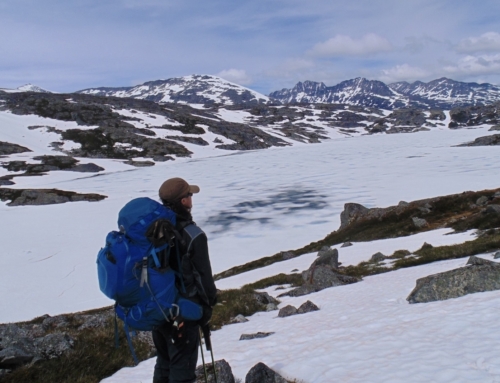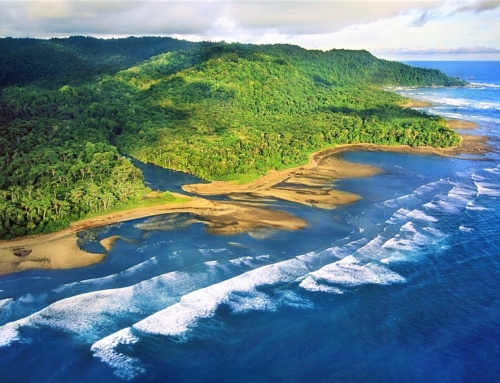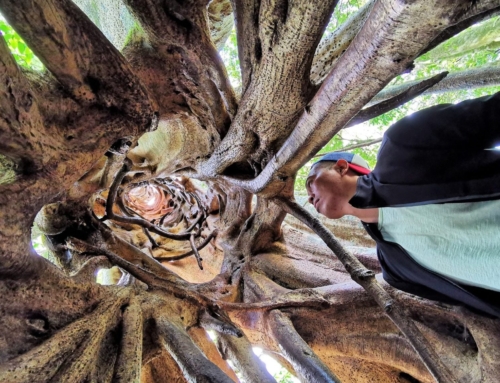All About Sustainable Travel, Top Green Destinations, and Smart Tips
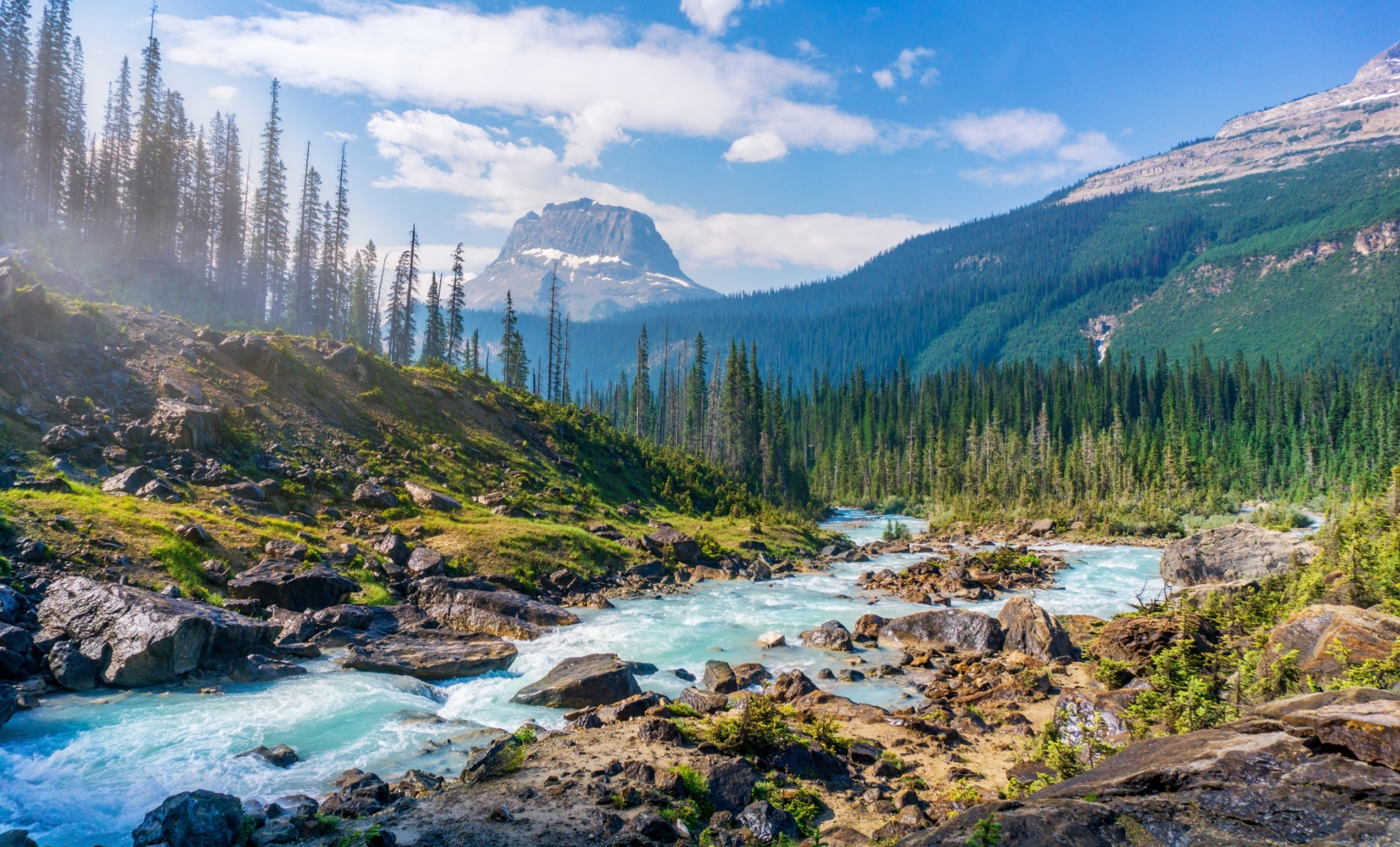
Sustainable travel is needed now more than ever. But what is it and how can you do it? Let’s first take a look at why it’s important.
The global tourism industry is responsible for a whopping 8% of all greenhouse gas emissions, and that number keeps climbing, according to a report published by Nature Climate Change.
Of that, the Environmental and Energy Study Institute attributes 2.4% of all emissions as a direct result of aviation. To put this into perspective, experts say you’d need to plant a whole acre (4,047 m2) of forest to recoup the carbon output of a single long-haul flight!
On top of all that, people are just waking up to the fact that travel sustainability isn’t only about cutting the carbon dioxide (CO2) we emit. There’s much more to it. It’s also about witnessing nature responsibly, eating ethically while on the move, and engaging and helping local communities.
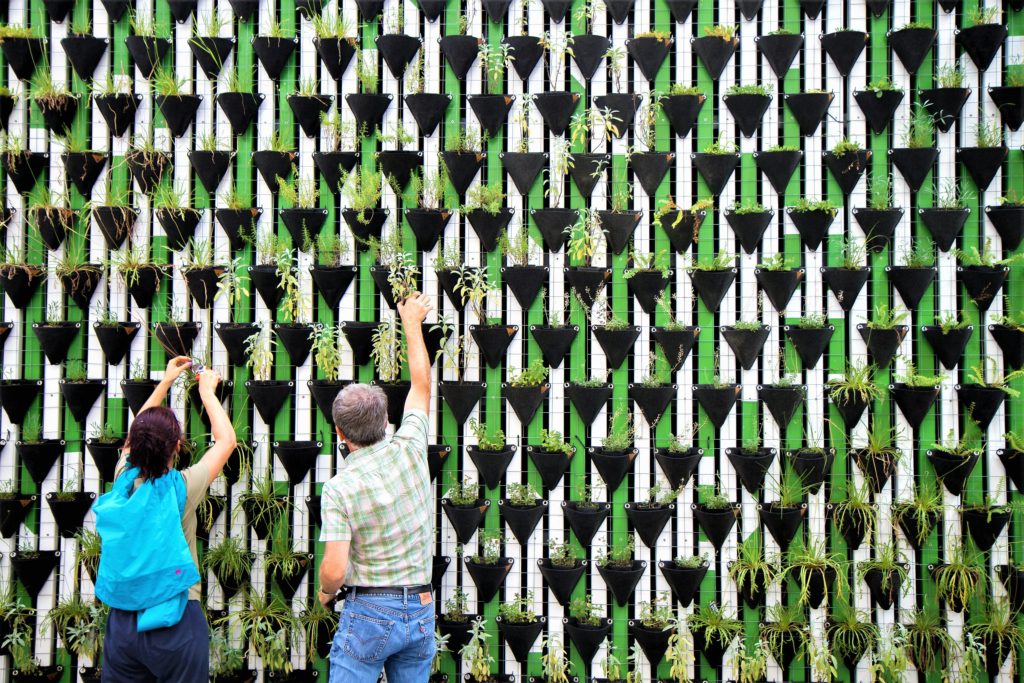
We’re on that journey here at The Explorer’s Passage, just like everyone else. As an industry award-winning premier adventure travel company, traveling better is a priority of ours. That’s why we want to loop you in on sustainable travel and we’re glad you found this blog.
Ever wonder what sustainability looks like in travel? Curious how industry players are making trips more eco-friendly? Interested in how you can globetrot more responsibly? Want some perfect destination ideas for greener travel? Keep reading to find out!
Inside this Guide
- What is sustainable travel?
- The Three Pillars of Sustainability
- Sustainable travel initiatives around the world
- Choosing a responsible travel provider
- 10 ways to travel more sustainably
- 3 top green destinations for sustainable tourism
What is sustainable travel?

Nailing down a concise definition for sustainable travel is tough. It’s possible to apply the same logic that’s used with renewable energy, in which case sustainable travel is all about ensuring there’s no permanent damage done to the natural world. However, most green travelers also recognize that there’s a need to include communities and cultures in a vision of sustainability and ecotourism.
Meanwhile, some organizations, like The Travel Foundation, paint the picture in more utilitarian terms: “The aim of sustainable tourism is to increase the benefits and to reduce the negative impacts caused by tourism for destinations.”
Generally speaking, you’ll see a few key themes run throughout:
- Safeguarding nature and natural habitats – The idea that travel can only be sustainable if it doesn’t do any permanent harm to the natural world.
- Combating climate change – This includes everything from carbon offsetting flights to traveling overland whenever there’s an option.
- Supporting and empowering local communities – A focus on keeping things local allows communities to benefit from the tourism that happens where they call home.
The Explorer’s Passage prefers to go a step further and say that sustainable travel is not just about mitigating negative impacts, but also about having a positive impact on the destinations we go to. AKA: Not simply leaving only footprints, but also leaving the place where you made those footprints better off than it was before – that’s regenerative travel.
Sound like the way you want to travel?
Check out our most popular adventure tour packages!
The Three Pillars of Sustainability

People, planet, profits – these are the central tenets of sustainability in the modern age. Otherwise known as the social pillar, the environmental pillar, and the economic pillar. Together, they form the backbone of sustainability across sectors from banking to business.
When it comes to travel, a lot of the focus is on the environment, but it’s actually important to focus on all three of these principles. Here’s a look at how:
- Social – The concept here is that every business should have the “support and approval of its employees.” When applied to the world of travel, you could say that every traveler should have the support and approval of the destinations where they go.
That means locals need to be a-okay with travelers or city breakers visiting, and they should have key stakeholder positions to determine who can travel where and when. Also, giving back to these communities ensures the sustainability of future tourism.
- Environment – This is probably the most talked-about aspect of the Three Pillars of Sustainability when it comes to green travel. It’s about protecting the natural world around us by doing all sorts, including cutting carbon footprints right down to using recyclable packaging.
- Economic – The buck shifts to the travel companies here, who need to do their bit to remain profitable while staying true to the two other principles of environmental and social sustainability. This is also about where we put our money. Will we fund local tour companies or global ones without a connection to the place that’s being explored?
Sustainable travel initiatives around the world
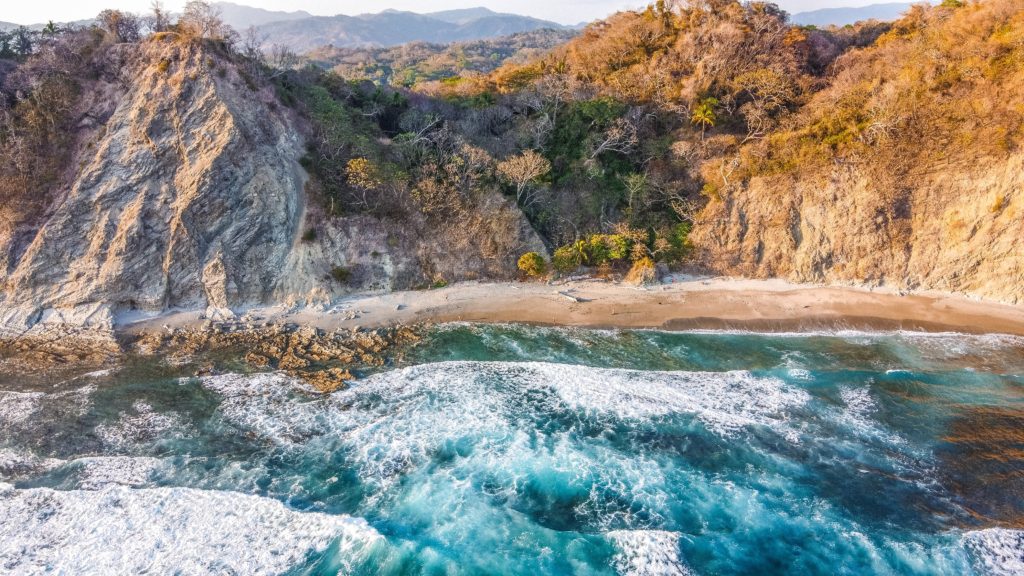
Whether its restrictions on how many trekkers can trek a historical trail each day, carbon-negative hotels in lush rainforests, simple CO2 reductions on flights, or travel-funded conservation programs, there are all sorts of sustainability initiatives on the go right now. Here’s a closer look at these few examples:
- Offsetting carbon emissions on flights and other bookings – The goal of carbon offsetting your travel is to mitigate CO2 emissions by funding an unrelated carbon-negative activity. That could be anything from tree planting to supporting renewable energy projects.
The specific carbon offsetting method is usually chosen by the airline or travel company. If your environment-friendly service provider offers such sustainable options, you can simply opt in to participate when you book. We cover more tips for greener travel later on, so keep reading!
- Activity restrictions – To promote eco-friendly travel and better preserve popular locations, there are now limits placed on the number of trekking permits for certain trails. For example, in Alaska, only 50 hikers per day are permitted to enter the famed Chilkoot Trail. And, in Peru, only 200 trekkers per day are permitted to hike the Classic Inca Trail to Machu Picchu.
- Trail maintenance programs – On the Inca Trail, in order to help preserve their sacred sites from overuse, the government of Peru closes the route for the whole of February. Similar protective actions are also common on the Great Walks of New Zealand, the Appalachian Trail, and in oodles of other places around the globe.
- Ban on single-use plastics – The simple act of switching out a disposable plastic bottle for a refillable one can go a long way. This can be done at a company level (we encourage all guests to use sustainable equipment on our treks and trips) or at a personal level (companies like Trash Hero World have been helping backpackers in Southeast Asia go green for some years now).

- Eco-friendly hotels – Many environmentally conscious hotels across the globe are increasing their use of renewable energy. An example would be a hotel that relies on solar panels for their power generation. And don’t be surprised to also see more hotels adopting recycling programs, laundering linen-and-towel-reuse programs, and composting practices.
Other hotels are giving back to the environment by setting aside land for rewilding (also known as land restoration) or running awareness-raising programs in local ecology. Costa Rica is very much leading the way here!
Choosing a responsible travel provider
Eco conscious? Us too. We love exploring as much as anybody else, but also realize the environmental and social impact of travel. Evolving the way we all travel is imperative to not only sustaining the natural playgrounds in which we visit, but also to bettering the vibrant communities that live there.
We’re so pleased that sustainable travel is gaining traction. When planning your holiday vacation trips, choose a company that does their part to lessen the impacts of traditional travel.
We, at The Explorer’s Passage, have been in the game for a while now and we do our best to, well, do our best. Our commitment to sustainability is real. Many other travel operators are also doing great things, but here are some of the ways we personally help you travel better when you choose us:
- Carbon footprint offsetting
We offer guests the chance to fly carbon neutral. As a proud partner in the Planet Care Program, our green travelers who book through Exito Travel (our air travel partner) can fully offset the CO2 emissions of their flights. This is achieved through Sustainable Travel International’s diverse portfolio of offsetting projects, at no additional cost to guests.
What’s more, The Explorer’s Passage goes beyond carbon neutrality. We actually removed more CO2 from the atmosphere than we put in and committed to offsetting 125% of the carbon footprint from our past Antarctic and Arctic charter trips.

In fact, we co-launched the Polar Carbon Negative Initiative (PCNI) in 2018, which called for all ship operators in the Arctic to also offset 1.25x of their CO2 emissions. We have since expanded this protocol to our other destinations across the globe and have provided tools to our travelers to assist with the offsetting of flights for even more carbon neutrality.
Our CO2 offset reduction program is conducted through participation in a number of renewable energy and environmental projects globally. These include but are not limited to wind farms, hydroelectric projects, solar panel fields, and reforestation efforts. We have set the standard for sustainable travel companies to take responsibility to offset carbon emissions in creative and thoughtful ways.
- Following the strongest guide standards
The Explorer’s Passage maintains some of the strongest guide standards and due diligence procedures in the global travel industry. We go through an exhaustive process when launching a new tour destination to ensure our sustainable travel programs are conducted in the right way.
We encourage all tour companies around the world to follow such guidelines, which help us determine everything from the guides we employ to the eco-friendly hotels our patrons stay at, as well as the vehicles we utilize to the very places we conduct our sustainable tours.
- Partnerships with sustainable travel organizations
We are a member of a spectacular global organization called Leave No Trace International. Their mission is to educate people to respect nature and to leave it as it was upon arrival. We proudly follow the Seven Principles of Leave No Trace which are:
-
- Plan ahead and prepare
- Travel and camp on durable surfaces
- Dispose of waste properly
- Leave what you find
- Minimize campfire impacts
- Respect wildlife
- Be considerate of other visitors
 We’re also proud supporters of the Center for Responsible Travel (CREST) and members of a number of other global organizations that help to promote sustainable travel. These include the Adventure Travel Trade Association and Sustainable Travel International, one of the leading players in the industry.
We’re also proud supporters of the Center for Responsible Travel (CREST) and members of a number of other global organizations that help to promote sustainable travel. These include the Adventure Travel Trade Association and Sustainable Travel International, one of the leading players in the industry.
Not only do they provide us with training in environment-friendly travel practices, but they also support a number of green initiatives around the globe, advise policymakers on sustainable governance, and help to develop local sustainability certification programs.
- Giving back locally
The Explorer’s Passage aims to effect positive change globally. We’re passionate about reinvesting a portion of our profits to help the environment and local communities.
In fact, we currently have multiple exciting new ecotourism and social impact projects in the works. On the social side, we’re researching ways to provide indigenous groups access to essential needs or tools to improve their current situation and prospects.
On the environmental front, we’re interested in contributing to the restoration of coral reef ecosystems. In the process, we aim to educate others about the importance of preserving and restoring such ecosystems, which leads us to our next point.
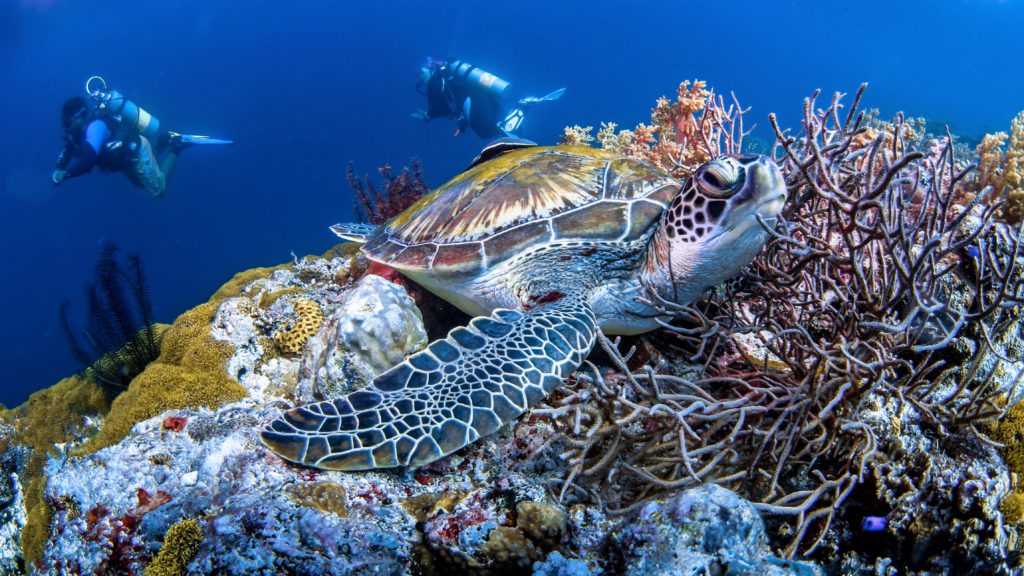
- Raising awareness & education
We never shy away from talking about the bad side of climate change on our adventures, but we also focus on the good. That could mean hiking out to see a retreating glacier in Patagonia or paying a visit to a tree planting farm in Costa Rica. The whole aim is to raise awareness about what’s going on in the world as the atmosphere warms up, all while encouraging audiences to advocate for potential ways to turn it around.
Each year, we provide a number of eco-friendly tours and experiences across the globe that are centered around sustainability and education. Through the use of workshops, world-class speakers, networking, and deeply immersive environmental education programs, participants return home transformed and ready to make a difference.
In 2022, we safely ran an Antarctic expedition cruise for 160+ participants from 35 nations who experienced the sobering effects of climate change at the edge of the world. Since the expedition, the group has collectively spread awareness globally through presentations to thousands at schools, corporations, and governments. They’ve also begun local initiatives and started green nonprofits, as well as implemented sustainable practices in their own lives through lifestyle changes.
Read more about our mission in articles by Newsweek, National Geographic, and other notable media outlets.
10 ways to travel more sustainably
Have you ever asked yourself, “how can I travel more responsibly?” There are so many ways to make your moves more sustainable when taking a trip. Here are 10 to start with:
- Use eco transport – One very effective way of reducing your CO2 emissions while on vacation is to swap carbon-intensive travel for something less emission heavy. That could mean taking a train instead of going by plane. You never know what adventure awaits on the tracks and you’ll get a closer view!
That goes for vessels too. If you traveled with The Explorer’s Passage on our most recent expedition to Antarctica, then you sailed on a more sustainable modern ship that consumes 60% less energy than other ships of comparable size. Plus, it had the lowest carbon emissions per passenger in the entire industry – now that’s something to feel good about.
- Do CO2 offsetting – There’s been a lot of debate about the efficacy of carbon offsetting. A report by the European Commission claimed that a whopping 85% of carbon offset schemes have totally failed. That’s not great news, but we still believe that offsetting attempts are better than doing nothing.
So, if you can’t reduce the carbon of your trip another way (by traveling overland, for example), then a simple way to mitigate the environmental damage is usually just the tick of a box when you book flights.
Also, consider participating in offsetting activities such as tree planting – just make sure the trees are native species to the area they’re going.

- Pick local, community-run hotels – A sure way to support local communities is to put money back into them. Seek out hotels that are owned and operated by locals themselves for your vacation stays. Not only is this more in line with sustainable principles, but we think it’s a ticket to a more immersive travel experience – think nights spent in glass-domed pods in the Andes and authentic Sherpa huts on the way to Everest Base Camp.
Also, more and more hotels are running sustainable initiatives so choose places with related certifications whenever possible.
- Reduce, reuse, recycle – Conserve water by taking shorter showers. Use less electricity by turning off lights and electronics when not in use. Limit laundering services by reusing linens and towels. And when it comes to food, only order what you’ll eat and compost if possible. If available at the destinations you visit and accommodations you stay, be sure to participate in recycling programs.
- Practice slow travel – Slowing travel down and taking more time to explore one place and its local gems means you’re less likely to hop on multiple long-haul flights in any given period. Also, select itineraries with the fewest possible connecting flights whenever possible. That has the effect of minimizing your footprint by cutting down your CO2 emissions but also means you can nurture more meaningful connections with the communities you visit.
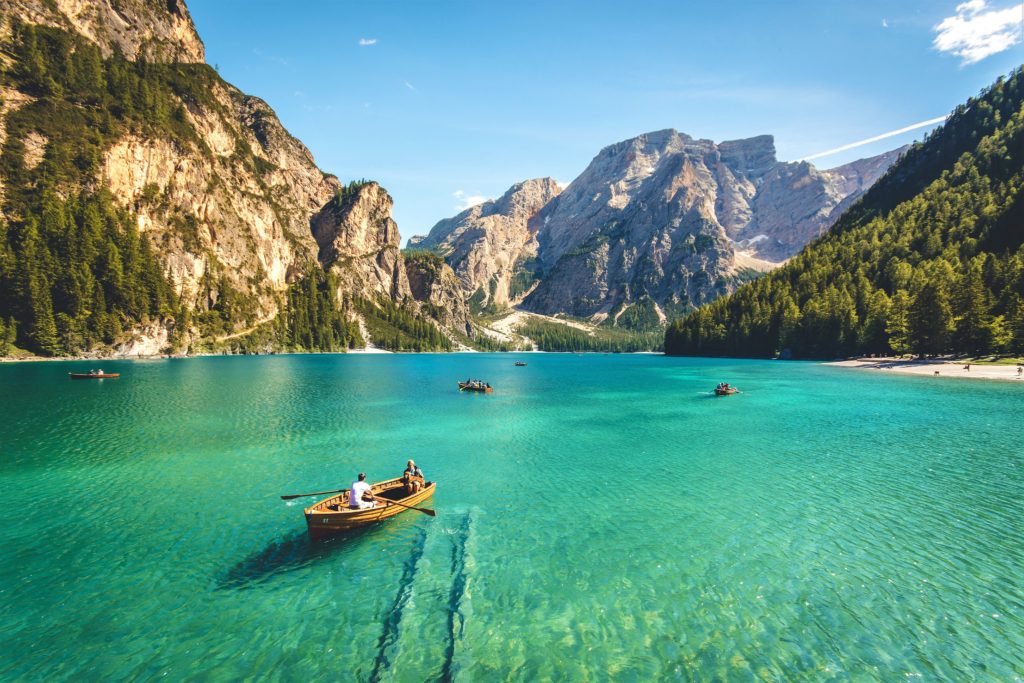
- Go with green activities – Choosing activities such as hiking, biking, kayaking, picnicking, and birdwatching can lower your impact while reconnecting you with scenic surroundings at your destination. Plus, you might get a workout from some of these activities so your body will thank you too!
If you have the chance to do so safely, a local clean-up can also be an impactful activity during your sustainable tour. We proudly ran a trip where our travelers assisted in a beach clean-up that removed 1,102 pounds (500 kilograms) of waste from the Patagonian shoreline. This is just the type of regenerative tourism that is critical to the future of travel.
- Choose tour companies with local guides – It’s not always easy to be sure that you’re picking local guides for your destination trip, but it is important if the aim here is to keep tourism money in the hands of the community. That’s why we’d always recommend choosing a tour operator like The Explorer’s Passage – our team of guides is only made up of expert locals which also ensures you a wonderfully authentic experience.
- Eat organic and local foods – The benefits of eating local and buying local are many. Eating a plant-based diet is also a greener way to fuel up. Go for the vegetarian and vegan options instead of the meats.
Travel with us and you can be sure that the chow on every adventure will always be sourced and cooked with an eye on sustainability. Cue menus of Nepali dal bhat (a staple rice and lentil dish) in Khumbu teahouses or hearty Peruvian fare on the Inca Trail made by backcountry chefs.

- Volunteer on eco missions – There are stacks and stacks of sustainability opportunities and programs out there just waiting for volunteer travelers – all you have to do is look. Also known as ‘voluntourism,’ these opportunities let you get hands-on locally when it comes to healing the planet.
A few years earlier, we partnered with the legendary British conservationist and anthropologist Dr. Jane Goodall and a team of eco champion volunteers to plant over 2,000 trees at the base of Mount Kilimanjaro. The aim? Rewild this incredible part of Africa while also helping green travelers to appreciate the precarious ecological state of the place they’re visiting.

- Choose only responsible wildlife tourism – There’s been a profound change in the way people view wildlife tourism in the last 10 years or so. The days that so-called “elephant sanctuaries” and the like could attract thousands of visitors are ending, as responsible travelers take on a more ethical outlook on the natural world. You can help speed this trend by joining their ranks. Only participate in responsible nature and wildlife ecotourism that’s committed to sustainable practices. If in doubt, don’t do it!
3 top green destinations for sustainable tourism
In all our years of adventuring, we’ve seen first-hand and all too often the negative impacts that travel can have. But we firmly believe that it doesn’t have to be that way.
This impressive planet of ours never fails to inspire us with its colossal glaciers, sawtooth peaks, lonely valleys, and primeval jungles. It’s easy to see that, right now, it needs help more than ever. That’s why The Explorer’s Passage takes green travel very seriously, putting sustainability and ecology at the front and center of our curated trips.
For some trip inspiration, we’ve compiled a list of a few perfect destinations for the eco-conscious traveler. Here are some of our favorite tours that you can feel good about taking and a glimpse at how we help lower our footprint:
Costa Rica

Costa Rica is right there at the forefront of ecotourism. A whopping 28% of the country as a whole is now protected as either a national park or a nature reserve. Whenever visiting this land of smoke-belching volcanoes and chirping quetzals, it’s super important that we help, not hinder, those national efforts towards environmental preservation. We do that by:
- Choosing sustainable hotels and local service providers who we evaluate on their eco-friendly credentials every year
- Educating green travelers on the history of Costa Rican wildlife, environmental protection, and ways to remain sustainable
- Participating in small, rural impact initiatives
- Participating in Wanna Help! – a campaign that promotes sustainable tourism with a focus on sharing the economic benefits of travel with local communities
- Promoting regional gastronomy – you will eat local on our eco-friendly trips!
- Providing refillable water bottles to all guests
- Offering regular training in sustainable travel practices to our tour guides
Learn more about this wild adventure and book our Costa Rica tour.
The W Trek in Chilean Patagonia
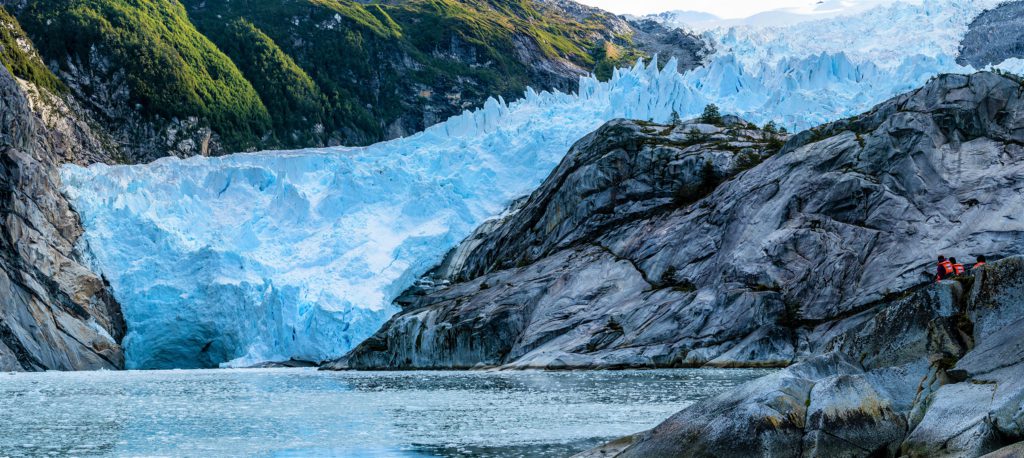
We’ve said it before, but we’ll say it again – the W Trek is one of the most eye-wateringly wonderful hiking adventure destinations on the planet. It just so happens to take you through a region that’s on the very frontline against climate change.
Glaciers and icefields here are thought to be at particular risk of rising temperatures. That’s why it’s more important than ever for us to get it right on our vacation tours. We’re dedicated to sustainable tourism best practices to ensure the W Trek can be enjoyed by future generations. As such, our local teams and service providers employ a number of environmental and economic initiatives, including:
- Partnership with AMA Torres del Paine, a non-profit that funds conservation projects throughout the national park
- Educational initiatives to teach green travelers about the traditional baqueano way of life of the Patagonian highlands
- Partnership with those who fund environmental and restoration projects within the communities and reserves of the Torres del Paine
- Dedication to the principles of Leave No Trace on all our treks, reducing the impact of our camping stays
Learn more about this Chilean adventure and book our W Trek tour.
The Inca Trail in Peru

Due to the high trekking numbers on the Inca Trail, the Peruvian government keeps tight restrictions on the iconic route. This has made it all the more important that our trips to this amazing corner of South America have as little impact on the environment as possible.
That’s why we emphasize the concepts of sustainability and responsible trekking on our Peru journeys. How? Here’s just a few ways we run our treks here as sustainably as possible:
- Minimize single-use plastics and ensure all trekkers have refillable water bottles or vessels
- Charge all electrical equipment using portable solar panels
- Strictly ban the collection of plants, rocks, or other ecological material to protect native habitats
- Use only authorized paths so that our treks don’t contribute to the erosion of the ancient trails
- Source sustainable local food ingredients and compost all organic waste
- Pack every piece of litter we accumulate each day
- Focus on minimizing all disruption to local communities within the Sacred Valley, including through proper noise moderation
Learn more about this Peruvian adventure and book our Inca Trail to Machu Picchu tour.

So there it is – your guide to sustainable travel that sheds light on what we can all do to manage our impact and help the world we call home.
From the very date of The Explorer’s Passage’s foundation, we’ve given our best efforts to do right by sustainability practices. We’re always learning and adapting, ready to develop our tours in a positive way – and we hope you’ll join us! Come be a part of more responsible travel and contact us to plan your next unforgettable adventure!
Why travel with The Explorer’s Passage?
We pride ourselves on delivering extraordinary tours based on travelers’ needs and are humbled by our guests’ testimonials. In fact, our dedication has earned us a 5-star rating on Tripadvisor, and awards by Travel+Leisure Magazine and Newsweek. Check us out and discover why so many green travelers worldwide choose us. We hope to see you soon!
Cheers,
Jeff
Jeff Bonaldi
Founder & CEO
The Explorer’s Passage
About Jeff Bonaldi
Jeff Bonaldi is the Founder and CEO of The Explorer’s Passage, a premier adventure travel company. His mission is to provide travelers with the opportunity to transform their lives and the planet through the power of adventure.
Learn more about Jeff’s story and his company HERE.


